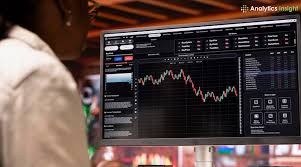
Mastering the Art of Paper Trading in Crypto
In the ever-evolving landscape of cryptocurrency, many traders and investors are seeking effective ways to hone their skills and refine their strategies. One of the best methods to achieve this is through paper trading in crypto. paper trading in crypto click here to learn how paper trading can help you build your acumen without the exposure to financial loss.
What is Paper Trading?
Paper trading refers to the simulated practice of buying and selling financial instruments. Unlike live trading, where actual money is at stake, paper trading allows traders to experiment without financial consequences. This practice can be particularly beneficial in the volatile world of cryptocurrencies, where rapid price fluctuations can lead to significant gains or losses.
The Importance of Paper Trading in Crypto
Cryptocurrency trading involves a high level of risk and a steep learning curve. New traders often find themselves overwhelmed by the complexity of the market. This is where paper trading comes into play, serving as a vital training ground for both novices and seasoned traders alike.
1. Risk-Free Environment
Paper trading allows individuals to make trades using virtual capital. This means that during the learning phase, traders can test strategies and techniques without the emotional pressure of risking real money. This risk-free environment encourages experimentation, which is essential for developing a personal trading style.
2. Strategy Development
Successful trading hinges on the effectiveness of one’s strategy. Through paper trading, traders have the opportunity to devise and refine their strategies, whether they revolve around technical analysis, fundamental analysis, or a combination of both. Testing strategies in a risk-free manner helps in identifying their strengths and weaknesses.
3. Understanding Market Dynamics
The cryptocurrency market is known for its volatility and unique dynamics. Paper trading helps traders in understanding how various factors—such as news events, regulatory updates, and market sentiment—impact price movements. This comprehension is vital for making informed decisions in real trading scenarios.
4. Developing Discipline
Discipline is a cornerstone of successful trading. Paper trading encourages traders to establish rules and stick to them without being tempted to deviate due to emotions. Developing this discipline during the simulated trading phase can carry over into live trading, enhancing a trader’s potential for success.
How to Start Paper Trading in Crypto
Starting with paper trading in cryptocurrency is straightforward. Here are some essential steps to guide you through the process:
1. Choose a Platform
Numerous platforms offer paper trading services specifically for cryptocurrencies. Popular exchanges often provide demo accounts that simulate real trading environments. Look for a platform that offers a user-friendly interface, comprehensive trading tools, and a wide range of cryptocurrencies.
2. Fund Your Virtual Account
Once you’ve selected a platform, you will typically need to set up an account. After registering, you can “fund” your virtual trading account with simulated capital. Many platforms allow you to adjust the virtual capital according to your preferences.
3. Create a Trading Plan
A clearly defined trading plan is crucial for consistent success. Your plan should outline your goals, trading style, risk tolerance, and criteria for entering or exiting trades. Utilize paper trading to test and modify your trading plan as needed.
4. Start Trading
Begin executing trades based on your paper trading strategy. Monitor your results and take note of your successes and failures. Over time, you’ll gather valuable insights that can enhance your trading approach.
Evaluating Your Paper Trading Results

Just as real traders analyze their actual trading results, paper traders should evaluate their simulated performance as well. Analyzing trades, profitability, and adherence to your trading plan can provide significant learning opportunities.
1. Review Trade Performance
Look back at the trades you’ve made. What worked well? What didn’t? Understanding your successes and failures will contribute to your growth as a trader.
2. Adjust Strategies
Utilize insights gained from your review sessions to adjust your strategies accordingly. Experiment with varying timeframes, indicators, or risk management techniques to see how they impact your results.
The Transition from Paper Trading to Real Trading
Once you feel confident with your paper trading skills and strategies, transitioning to real trading is the next step. However, this transition should be approached with caution.
1. Start Small
When first moving to a real trading environment, consider starting with a small amount of capital. This approach allows you to manage risk effectively while still gaining exposure to the actual trading experience.
2. Keep Emotions in Check
Real money adds emotional stakes that aren’t present in paper trading. Practice maintaining your composure and sticking to your trading plan, regardless of market fluctuations.
3. Continuously Learn
The cryptocurrency market is constantly evolving, and continuous education is essential for ongoing success. Stay updated on market news, trends, and emerging technologies to stay ahead in your trading endeavors.
Conclusion
Paper trading in crypto is an invaluable tool for traders looking to refine their skills without the financial risk typically associated with trading. By practicing in a risk-free environment, honing strategies, and developing discipline, traders can set themselves up for long-term success in the unique and challenging world of cryptocurrency trading.
Ultimately, embracing paper trading can be a transformative step towards mastering the intricacies of crypto trading, leading to more informed and effective decisions when venturing into live markets.